We are celebrating our 30th year in business at Decorating with Fabric. But, my history with window coverings goes much further back, beginning with my grandfather Harry Gordon. At the conclusion of World War 2, Harry returned from his service in the Navy to open his first housewares store in the East Bronx in 1945. It is in this store where he began to sell Kirsch Drapery Rods. Through several stores, a partnership with my father Walter Gordon who “hung” rods in the 1960’s for $5, all the way to present day, the Kirsch brand has been a part of our family business history. That is why I am compelled to share this blog on the History of the Kirsch Brand. The resource for this blog comes from the Kirsch website.  The Kirsch brand dates back to the invention of the first flat curtain rod and the first telescoping rod by Charles Kirsch in 1907. Today, Kirsch is noted for a fashion forward line of Blinds & Shades, Decorative Hardware and Basic Hardware.
The Kirsch brand dates back to the invention of the first flat curtain rod and the first telescoping rod by Charles Kirsch in 1907. Today, Kirsch is noted for a fashion forward line of Blinds & Shades, Decorative Hardware and Basic Hardware.
The company was organized for the purpose of perfecting, manufacturing and patenting the simplest and most serviceable rods for modern draping needs. Being distinctive in design and finish, it met the demand for a strong, practical and durable rod. The Kirsch rod would not sag, tarnish or rust and its telescoping ability made fitting any size window possible. Kirsch immediately began packaging these rods, complete with brackets, and was soon shipping them to customers all over the world.
 In 1912 Charles W. Kirsch published his first “Style Book” for the assistance and guidance of purchasers of drapery hanging specialties. His hope was that the book would prove valuable to dealers, managers and clerks of drapery departments in presenting to their customers the latest and most popular suggestions in window and door treatments. Mr. Kirsch’s goal was to continue with periodic updates to the book as a way to connect with his customers and with homeowners everywhere.
In 1912 Charles W. Kirsch published his first “Style Book” for the assistance and guidance of purchasers of drapery hanging specialties. His hope was that the book would prove valuable to dealers, managers and clerks of drapery departments in presenting to their customers the latest and most popular suggestions in window and door treatments. Mr. Kirsch’s goal was to continue with periodic updates to the book as a way to connect with his customers and with homeowners everywhere.
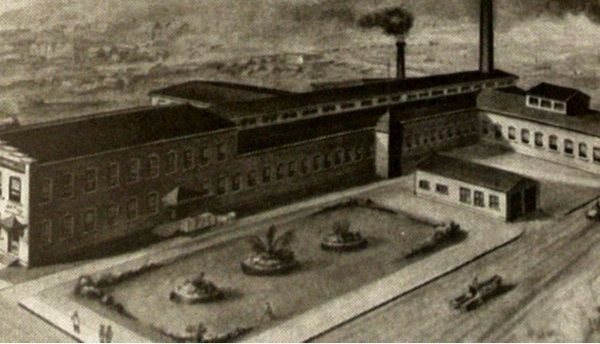 Due to the merits of the first Kirsch patented lace curtain rod, by 1923, the Kirsch Company had grown from capacity of less than 500 curtain rods produced per day to a capacity of over 20,000 fixtures daily, made in over 75 different sizes, styles and finishes.
Due to the merits of the first Kirsch patented lace curtain rod, by 1923, the Kirsch Company had grown from capacity of less than 500 curtain rods produced per day to a capacity of over 20,000 fixtures daily, made in over 75 different sizes, styles and finishes. 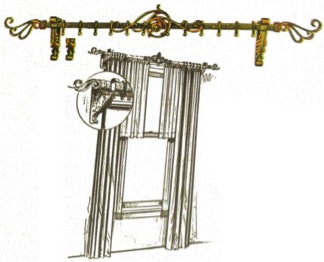
A long period of close study had established that pre-manufactured rods of the day were not providing enough options to consumers. After experimental work and exhaustive tests, Kirsch introduced in 1925 the DeLuxe Cut-to-Measure Drapery Hardware- one of the most important developments in drapery hardware history.
 In 1928 to address the need for draw curtains without sacrificing the beauty of the drapery effect, Kirsch invents the first adjustable traverse rod. The modern day solution assured the ease of drawing draperies and curtains with gentle glide. All operating parts were now concealed within the rod, eliminating any unsightly problems such as dropping or tangled cords. No longer were draw draperies an expensive luxury.
In 1928 to address the need for draw curtains without sacrificing the beauty of the drapery effect, Kirsch invents the first adjustable traverse rod. The modern day solution assured the ease of drawing draperies and curtains with gentle glide. All operating parts were now concealed within the rod, eliminating any unsightly problems such as dropping or tangled cords. No longer were draw draperies an expensive luxury.
 Kirsch Rods were used exclusively in “Gone With the Wind.” Kirsch rods are used to create the magnificent federal window treatments seen in “Gone With the Wind.” Kirsch merchandised this fact with special dealer promotion at the time of the movie’s first release.
Kirsch Rods were used exclusively in “Gone With the Wind.” Kirsch rods are used to create the magnificent federal window treatments seen in “Gone With the Wind.” Kirsch merchandised this fact with special dealer promotion at the time of the movie’s first release.
 The Greatest Workroom Advancement Since the Sewing Machine, the “Kirsch Kustomatic”, is unveiled in 1953. It provided a new, radically different, faster and better way of attaching drapery and curtain hooks. Developed in a custom workroom by a decorator and workroom manager, the new system was speedy, efficient and profitable. Attaching 500 hooks by hand took 28-30 hours at a cost of up to $30; attaching 500 Kustomatic hooks took less than 1.5 hours at a cost of only $1.50.
The Greatest Workroom Advancement Since the Sewing Machine, the “Kirsch Kustomatic”, is unveiled in 1953. It provided a new, radically different, faster and better way of attaching drapery and curtain hooks. Developed in a custom workroom by a decorator and workroom manager, the new system was speedy, efficient and profitable. Attaching 500 hooks by hand took 28-30 hours at a cost of up to $30; attaching 500 Kustomatic hooks took less than 1.5 hours at a cost of only $1.50.
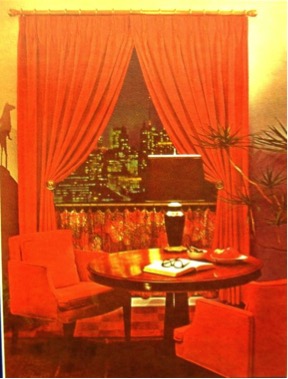 Another Kirsch first! These made-to-be-seen rods opened yet another market, and offered all-new decorating concepts.
Another Kirsch first! These made-to-be-seen rods opened yet another market, and offered all-new decorating concepts.

Kirsch Decorative Traverse Rods are introduced
on the “Today Show”
The World’s First Motorized Electromagnetic Traverse Rod, the Electrac by Kirsch,” is introduced in 1962. It required no cords or pulleys, had no wheels or other moving parts to go wrong and needed no maintenance. It was the world’s first practical household application of the linear motor principal.
 Kirsch Introduces PanelTrac® in 1965, a versatile deice for creating sophisticated window treatments, room dividers and shoji screen effects is developed by Kirsch. Representing a revolutionary concept in contemporary room treatments, fabric was hooked with Velcro fastening tapes onto sliding strips in aluminum tracks to create the effect of sliding walls.
Kirsch Introduces PanelTrac® in 1965, a versatile deice for creating sophisticated window treatments, room dividers and shoji screen effects is developed by Kirsch. Representing a revolutionary concept in contemporary room treatments, fabric was hooked with Velcro fastening tapes onto sliding strips in aluminum tracks to create the effect of sliding walls.
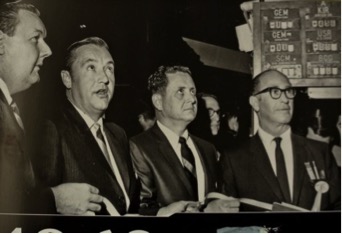 Kirsch® achieved a major milestone in company history when trading of its shares on the New York Stock Exchange began on May 9, 1969 with a ticker tape symbol listing of “KIR.”
Kirsch® achieved a major milestone in company history when trading of its shares on the New York Stock Exchange began on May 9, 1969 with a ticker tape symbol listing of “KIR.”
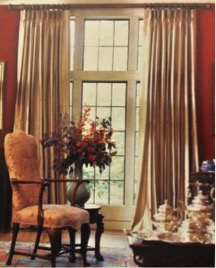 In 1995 Kirsch introduced the Buckingham Collection. The line offers exquisite detailing, excellent craftsmanship and intricate, hand-finished pieces. This product is engineered to handle heavier fabrics, allowing for luxurious functionality.
In 1995 Kirsch introduced the Buckingham Collection. The line offers exquisite detailing, excellent craftsmanship and intricate, hand-finished pieces. This product is engineered to handle heavier fabrics, allowing for luxurious functionality.
 Newell Rubbermaid Inc. acquired Kirsch in 1997 and integrated the brand into the Newell Window Covering Division and in 2001, merged with Levolor – officially changing the company name to Levolor Kirsch Window Fashions. Today, Levolor Kirsch employs 2,821 people throughout the U.S., Canada and Mexico. As the industry benchmark for design, innovation and marketing, the Kirsch brand continues to be the leading choice among dealers, designers and consumers.
Newell Rubbermaid Inc. acquired Kirsch in 1997 and integrated the brand into the Newell Window Covering Division and in 2001, merged with Levolor – officially changing the company name to Levolor Kirsch Window Fashions. Today, Levolor Kirsch employs 2,821 people throughout the U.S., Canada and Mexico. As the industry benchmark for design, innovation and marketing, the Kirsch brand continues to be the leading choice among dealers, designers and consumers.

